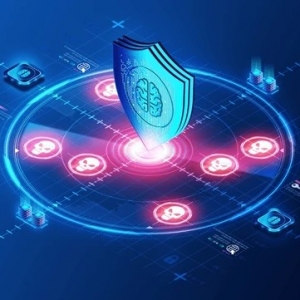Cyberattacks today happen at extraordinary speed. Gone are the days when attackers took weeks or months to move through systems. With automation, living-off-the-land techniques, and identity-based compromise, a modern intrusion can escalate to data theft or ransomware detonation in minutes — sometimes seconds.
In cybersecurity, speed is no longer a performance metric — it’s survival.
The faster a SOC can detect, investigate, and respond to an incident, the lower the damage, cost, and business disruption. Which leads to a critical question:
How fast should your incident response really be — and where do you stand?
The Real Breach Timeline: Why Seconds Matter
Global research shows alarming patterns:
|
Stage of Attack |
Time for Attackers |
Time for Defenders |
|
Initial Compromise |
Minutes |
Hours or Days |
|
Privilege Escalation |
Minutes |
Days |
|
Lateral Movement |
10–90 Minutes |
Weeks |
|
Data Theft / Ransom Deployment |
Under 24 Hours |
Often too late |
The gap between attacker speed and defender speed is known as the response gap—and it’s widening.
If your SOC relies on manual investigation, multiple tools, and ticket-based response workflows, the attacker already has a head start.
Why Traditional IR Is Too Slow
A traditional Incident Response (IR) model includes:
- Alert triggers
- Analyst triage
- Manual investigation
- Decision approval
- Containment actions
On paper, this model is thorough. In practice, it creates bottlenecks:
- Analysts drown in alerts
- False positives waste time
- Evidence gathering is manual
- Response depends on individuals, not systems
- Containment may require multiple approvals
By the time action is taken, the attacker may already have:
- Stolen credentials
- Compromised privileged accounts
- Exfiltrated data
- Launched ransomware
- Established persistence
Being accurate is important — but being too slow is catastrophic.
So How Fast Should Incident Response Be?
Security leaders today measure response outcomes using three benchmarks:
|
Metric |
Meaning |
Recommended Target |
|
MTTD |
Mean Time to Detect |
Seconds to minutes |
|
MTTI |
Mean Time to Investigate |
Under 5–15 minutes |
|
MTTR |
Mean Time to Respond |
Minutes, not hours |
Leading SOCs, especially those using automation, aim for:
Detection in under 1 minute
Investigation under 10 minutes
Containment under 30 minutes
If your organization requires hours, days, or approvals to take action, you’re already behind modern threat timelines.
What Enables Faster Response?
Three major capabilities separate fast, modern IR programs from slow, reactive ones:
- AI-Driven Threat Detection
Machine learning and UEBA help detect:
- Lateral movement
- Credential misuse
- Anomalous API activity
- Suspicious login patterns
AI filters noise and surfaces real threats quickly — reducing triage time dramatically.
- Automated Investigation and Correlation
Automated Incident Response tools instantly:
- Map attack paths
- Enrich alerts with context
- Connect logs across SIEM, EDR, NDR, IAM, and cloud systems
What once took analysts hours now takes seconds.
- Automated or Assisted Containment
Modern response workflows can automatically:
- Disable compromised user accounts
- Isolate endpoints
- Block malicious IPs and domains
- Terminate risky sessions
- Enforce MFA challenges
This transforms response from human-paced to machine-paced.
How to Know if You’re Falling Behind
You may need faster Incident Response plan if:
- Your analysts spend more time triaging than responding
- Containment requires manual approvals
- You still rely on ticketing systems for response
- You cannot track attacker movement in real-time
- Your tools operate in silos instead of coordinated response
If these feel familiar, your IR program may be reactive — not resilient.
Conclusion: Response Speed Defines Cyber Resilience
In today’s threat landscape, slow response equals higher damage, higher cost, and higher business risk.
Attackers have automation. Defenders now need it, too.
A modern Incident Response services strategy must be:
- Predictive, not reactive
- Automated, not manual
- Behavior-aware, not signature-dependent
- Measured in minutes — not days







